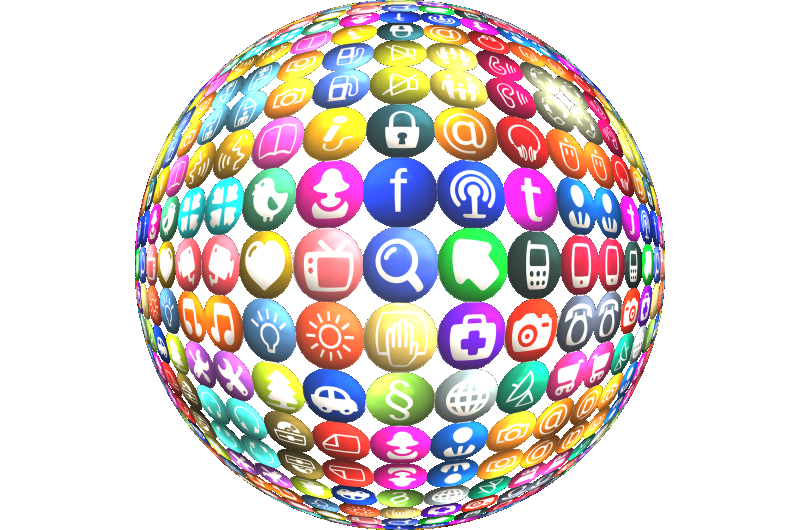Credit: CC0 Public Domain
Scientists from Russia and Singapore have created an algorithm that predicts user marital status with 86 percent precision using data from three social networks instead of one. While testing, the program identified Donald Trump, the 45th U.S. President, who is actually married, as single. According to the developers, this inconsistency arose because of Trump's abnormal activity in the media. The businessman seems to use Twitter like a bachelor. The study was reported at the AAAI Conference on Artificial Intelligence in San Francisco.
Mathematicians from ITMO University in Saint Petersburg, Russia, and National University of Singapore found out that profiling users through several social networks rather than just one makes it possible to learn specific details about individuals. In particular, the researchers focused on such a characteristic as marital status. Combining the data from Twitter, Instagram and Foursquare, they taught the algorithm to predict this parameter with 86 percent precision, 17 percent higher than using just one social network.
The algorithm can examine any English-speaking account. To demonstrate how it operates, Andrey Filchenkov, associate professor of Computer Technology Department at ITMO University, collected and analyzed tweets of Barack Obama and Donald Trump, the 44th and 45th Presidents of the United States. Based on this data, the algorithm confirmed Obama's marital status, but concluded that Donald Trump is a bachelor. This irregularity can be explained by the fact that Trump himself does not update his social media accounts, instead employing assistants to make updates. "We all know about his wife Melania," says the researcher. "But in this case, we are studying whether all Trump's assistants are married or not. We are not guessing who Trump is, but who runs his social media."
To train the algorithm to understand the data input, the scientists analyzed the activity of users from New York, Singapore and London and created sets, or vectors, of a variety of parameters including average tweet size, the most frequent objects in the photo, check-in distribution and so on. Then developers used these vectors in basic machine learning models.
Co-author Kseniya Buraya, researcher at ITMO University, is doing an internship at National University of Singapore, where she studies approaches for describing human personality through social networks. She processes user data with this algorithm and then adapts the information to Myers-Briggs Type Indicator (MBTI), a scale of psychological types based on Jung theses.
The scale describes a person in terms of how he or she interacts with the world, which, in turn, is easiest to learn from social media. Buraya explains, "Many scientific sources associate a person psychological type with his marital status. So we decided to check how precisely we can predict this parameter to use it for making human psychological portraits in the future."
User profiling, according to the scientists, can have a wide range of applications. For example, recruiters can learn more about people who are applying for a job. More generally, characterizing personality through activity in social media can reveal illegal groups, as well as identify people prone to depression or suicide for related support. The authors regard the report as a basis for further work. They are going to continue the study to achieve publication in a peer-reviewed international journal.
More information: Kseniya Buraya, Aleksandr Farseev, Andrey Filchenkov and Tat-Seng Chua (2017), Towards User Personality Profiling from Multiple Social Networks. In Proceedings of the Thirty-First AAAI Conference on Artificial Intelligence. AAAI
Provided by ITMO University























